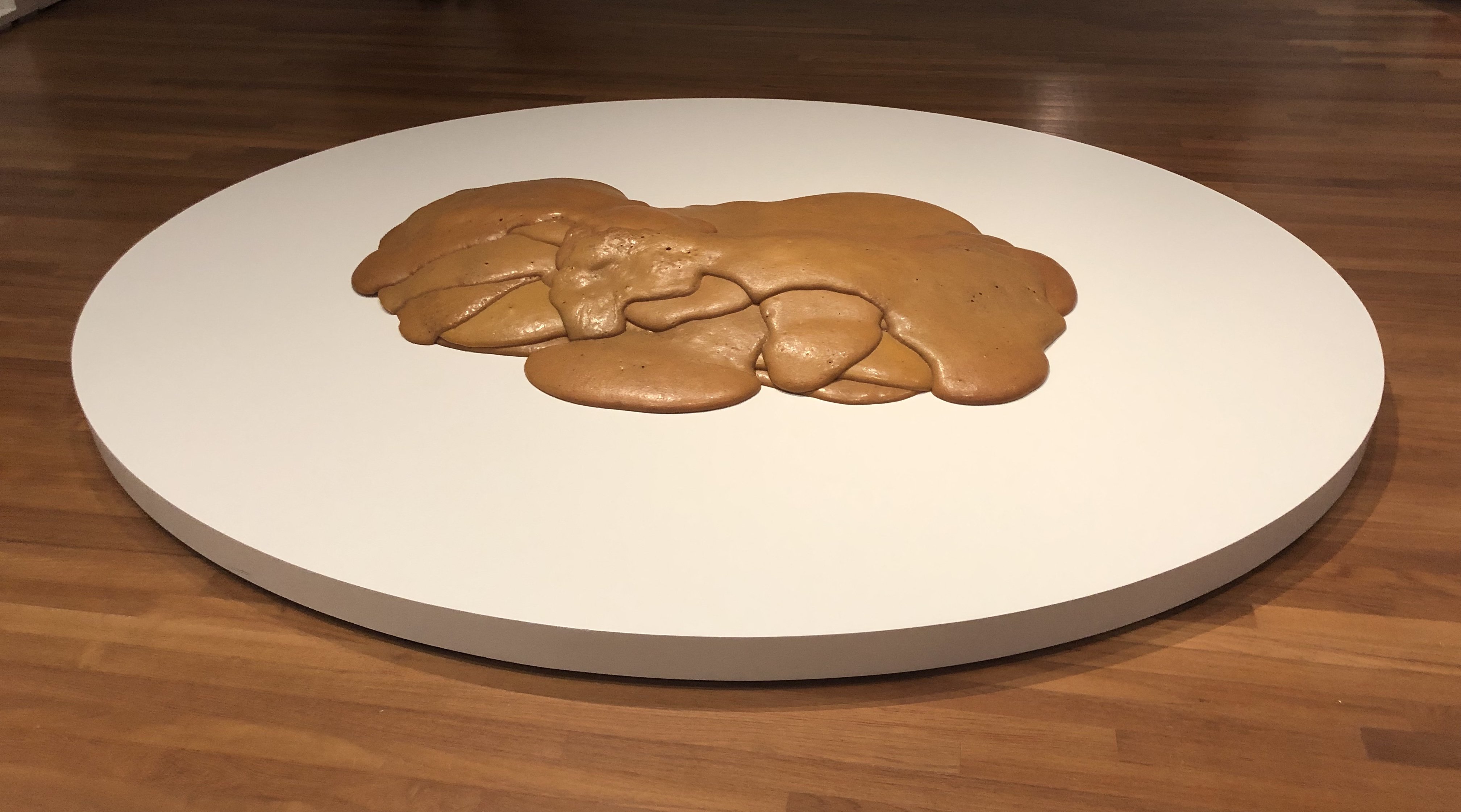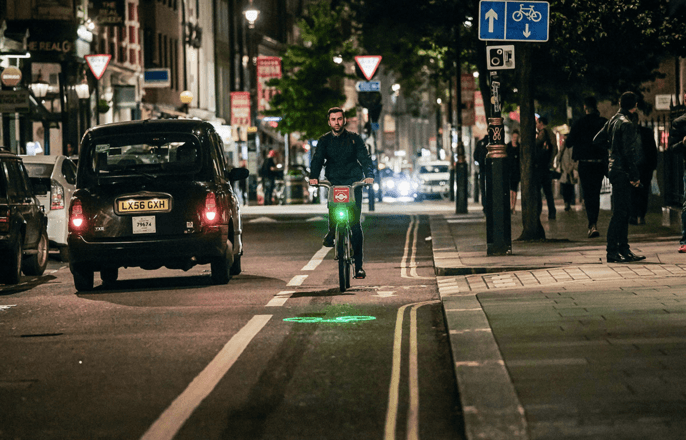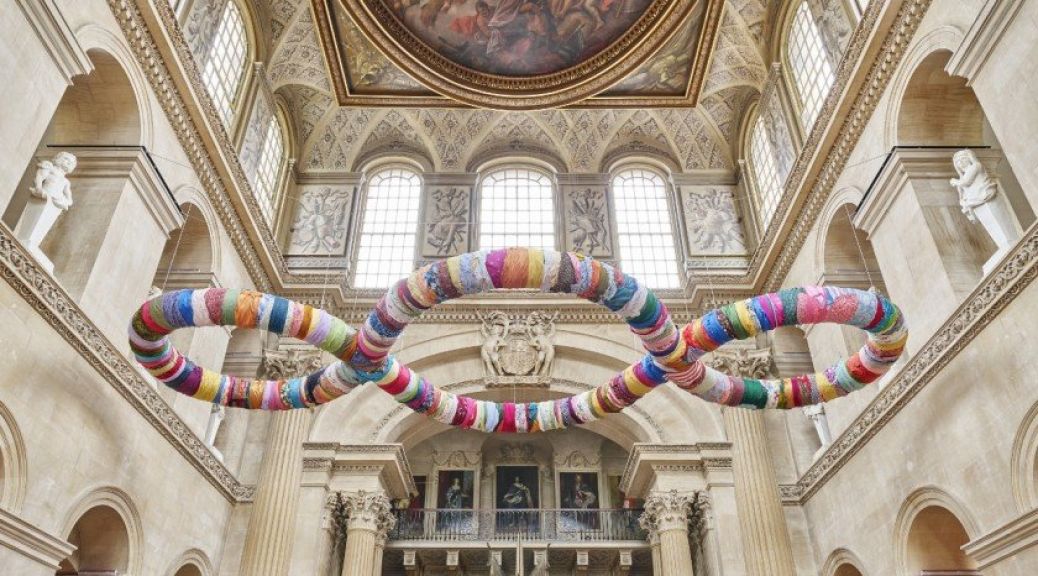https://drive.google.com/open?id=10uFGbw0nZOHkH5NziXsz32n_i–YILWy
Category Archives: Research
Week Four Assignment – National Gallery :: Minimalism
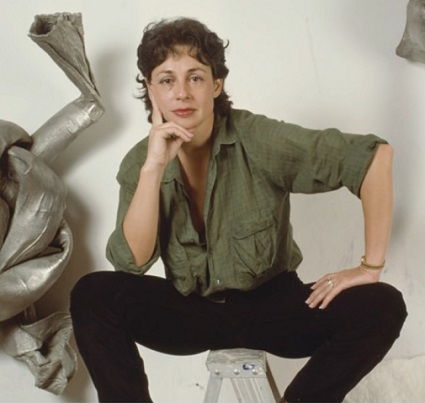
By paring artworks down to their most essential elements, Minimalist artists intended to strip away individual expression and artistic decision-making and create a direct, unmediated encounter between the viewer and the art object in a specific space and time.
Artist :: Lynda Benglis
From the exhibition, I think there were many works that were interesting – for example, I really liked “Cloud Canyons No. 24” by David Medalla, and also “Void” by Anish Kapoor. However, I felt that the meanings behind Lynda Benglis’ works are more relatable towards the essence of “Minimalism”. Maybe because her works lean towards abstract expressionism – focusing on the use of the medium, just like Abstract artist Jackson Pollock. For example, in some of her works, she eliminates the conventional use of any form of canvas and poured paint onto the floor, allowing the walls and corners to shape her work.
“I just wanted to go beyond, and create something that was visually more. I was interested in excess, buoyancy, weight, gesture of material. It was very different from abstract expressionism.”
She simply pours her mediums and allows them to take their own shape. Any conceptual interpretation of the work is left to the viewer as she believes that that viewer is half the work.
“I believe the viewer is half the work. Duchamp said it and I believe it.”
Although her works venture into feminism, I think that her main focus on material (especially something that was new during that time) and “unaltered results” help make her artworks broader and open to greater interpretation, because she was able to find a material that did not have a prior suggestion stuck to it, furthur defining the nature of minimalism.
References:
Lynda Benglis | National Museum of Women in the Arts
Week Three Assignment – Thoughtful Interaction Design
After reading Chapter 1 of “Thoughtful Interaction Design”, I think that it really speaks to all of us as aspiring interactive artists/designers, and for myself, I think it’s very relevant to my assignments that I’ve done as well. However, one of the questions from this chapter that would ground my reflection is;
What is Good Design?
Initially, I felt that how ‘good’ an interactive work is is up to each and every designer, because then only they are able to produce something that they would deem suitable. I felt that as long as my artwork serves its purpose and is able to present its idea clearly, it would be considered “good”.
However, this reading provided a different outlook – mostly on how context and society plays a very big and relevant part of how your design decision will be made. Since every society is different, every society ultimately requires different needs, and also have different views on the design itself. Some societies may be more open than others and that would cause alteration of designs.
While sometimes the decision seems to lie with the clients, since they are the ones that provide the “problem/issue”, designers will have to think of the details that answer this issue and the complexities behind the problem and the proposed design. And I guess this idea of a good design then links to the main idea of “thoughtful interaction design”. This is because, from the very first design sketch, it has to be something that is valuable to society ultimately. And maybe there are also many instances where designers are the creators of such ‘good design’ – for example; Kickstarter.
One example is the ‘Blaze Bike Light’ (now beryl) which provides safety for cyclists especially in the night, as it helps to project a green LED bike symbol on the road ahead, creating a bike lane even where there is none. This helps cyclists to alert other vehicle drivers and provides a safer journey for them.
I think this design is something not only simple but also universal – and does not require much for people to understand. The product itself is also light and portable which makes the design suitable for its purpose/function.
(And they have also launched a website https://beryl.cc/ that provides other products for other purposes (related to cycling)!!!)
On a side note, It is quite interesting to read the comments in the youtube video, because people are arguing about how it is a "British product that is illegal on Britain roads", and also there are people who are defending this statement with the written law. I guess this shows how designs are really limited by these variables.
Week Two Assignment – The Third Paradise
The Third Paradise
“The Third Paradise is the third phase of humanity, realized as a balanced connection between artifice and nature.”
I feel that this concept is rather relatable especially in modern society, considering the conflicts that we contributed to, yet we are the ones who can maintain a balance.
During the lecture/event, Artist Michelangelo Pistoletto mentioned that he started from the mirror. He wanted to paint a portrait of himself as he saw the mirror as a canvas, but he then realized that he was not alone in his self-portrait. As he used a mirror, it would not only reflect him but people who go into the frame as well. He saw the viewers and audiences’ reflections from the mirror and from a self-portrait, in which his identity was “I”, it became “us”. This was the direction of his vision, whereby the appearance of these people made him reflect and felt that he had to make the artwork for the society.
Knowing that the traditional means of art (e.g. painting) have been gradually taken away by the increase of photography, there was a revolt towards technology for taking away artistic capacity, and hence he felt that he wanted to integrate the society through his mirror and painting. He also called this a discovery rather than a creation of his artwork.
Another interesting concept that he mentioned was when he created his sphere, ball of newspapers. Instead of making a static artwork, he created one that could move. He saw the interaction of the people with his sphere and thought of it as a representation of ‘chance’. This was because everyone was pushing the sphere, but each one of them was pushing it towards their own direction that they wanted it to go towards. To me, this was quite an interesting concept because such a simple idea of just pushing the sphere could represent quite a profound notion. If you further analyze it, you know that only the people who want that chance to push the sphere would fight for their chance to make sure that they get to the sphere. So somehow, it becomes a chance that arrives from a chance.
Week One Assignment – Introduction
Tan Chloe
Chloe is an aspiring interactive designer that seeks to produce practicality in interactive media. She is currently pursuing a Degree in Fine Arts in Interactive Media at Nanyang Technological University, Art Design and Media.
Having an interest in all things art and digital design since she was young, she loved trying new things, and eventually stepped into the world of interactive media and that began her interest in exploring not only artworks but also other platforms that could promote interactivity with users.
Chloe’s other interests include illustrating, graphic designing, coding and video editing. She hopes to venture into works that can encompass all these various interests of hers.
DAILY DRINK DILEMMA
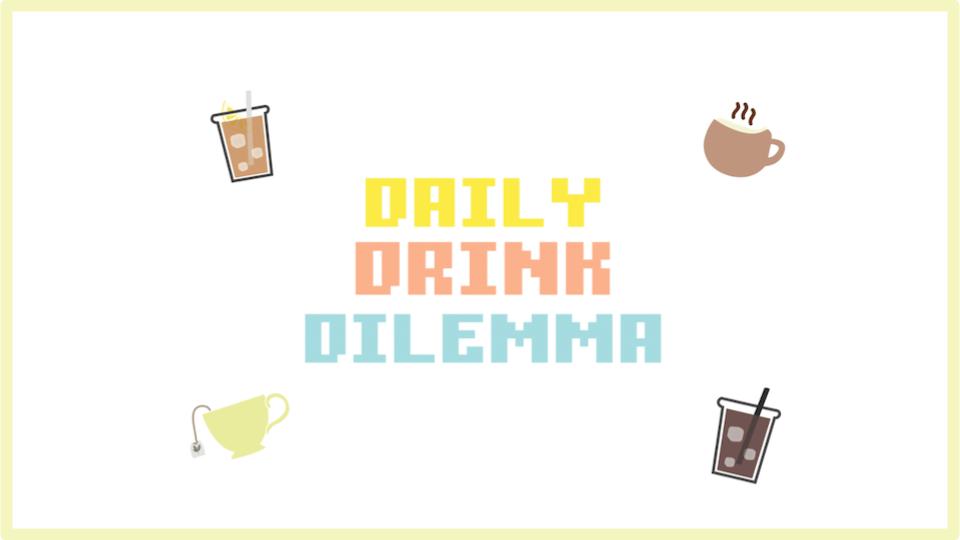
This was a programme written using cycling74, MaxMSP to help people decide on what they should drink, based on their reactions to kind of test their level of tiredness, and also based on their body temperature.
RESUME
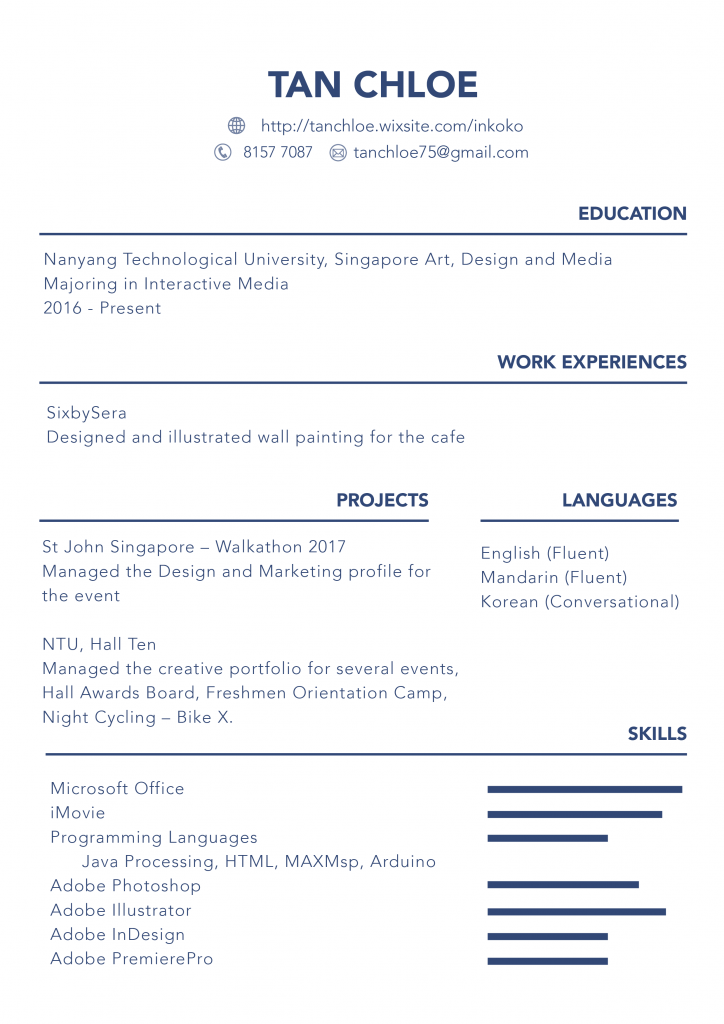
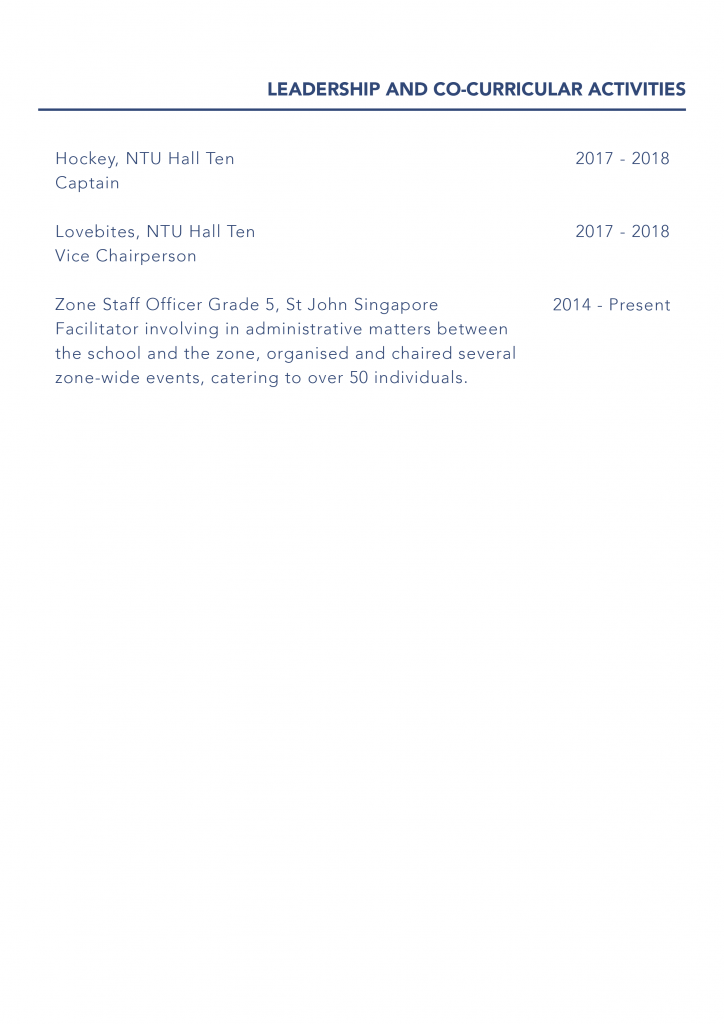
A WORK TO SHARE
This artwork allows anyone – with or without knowledge in music play a music piece with just these lines/surfaces and more importantly, I think I’ve always been quite fascinated by installations that are more hands-on/require you to do something rather than one that is merely immersive. I think it makes me think about my own artworks in the future, maybe – of how I would like them to be more dependent on audience participation (and would hopefully keep people occupied for a long time!)
